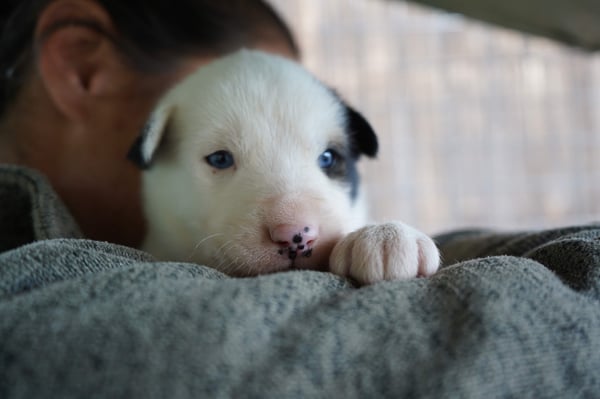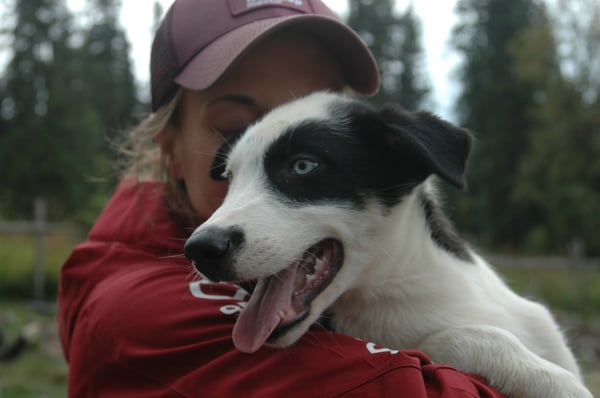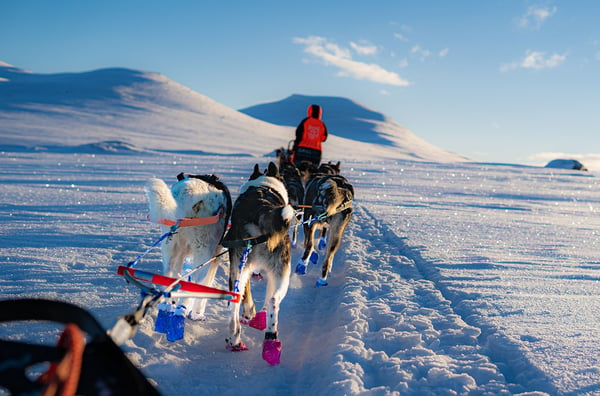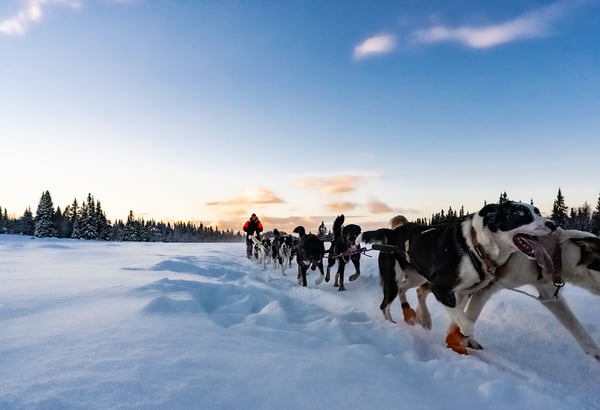I have an important rule when working with the young and hopeful; A puppy should not be physically conditioned or heavily burdened mentally or physically. I want them to get used to running in teams and master that experience early.
Adaptation to harnesses, lines, sounds, moves and routines, can already begin when they are five to six months old. Physical training - that is, conditioning the four-legged, should wait until the dog is physically and mentally mature. When, can vary from dog to dog and breed to breed.

Wait with long distance training
We spend a lot of time socialising the puppies the first year. Physical exercise will come later.
In the period between three and four months, we teach the puppies to wear a collar and walk on a leash and wear a harness.
Then, it usually doesn't take long before the need to pull start. When this happens, often around five to six months, we teach the puppies to pull a small bicycle tire or similar for a few meters. We run next to them with a line attached to the collar. Everything is fun and play and we only do this for a few minutes before we stop.
Playtimes like this always end with treats and praise.

Use experienced dogs
We teach the puppies to sit before food and before we open the doors to the dog yard. They also learn to come when called. It is not important what they learn, but rather that they learn how to learn. I want to build trust and a common ground of communication between us at this point in their life. It should be fun to play with us humans!
When the puppies are about 7-8 months, I take them on their first run in harness.
I place the younglings with adult dogs, which has just finished their training-run. This way they are calm and collected with more patience. I stop the team of adults a few meters from the main house before I add on the puppies. The pull-line is connected to the harness of the puppies, while a "helper" runs in front with a line connected to the collar.
Learn more: A Bulletproof Setup
We have very good experience with paring up the puppies with the older dogs. To help them off in the beginning, we usually also run in front of the team for some meters to bring the focus forwards. The experienced calms and shows the younglings how to behave, while we give them a little extra motivation to move forwards.

Tip; Bring a friend!
We are always two or three people when we start up with the puppies. It's a very good tip to be more than one in the beginning. This way we keep control of the situation and all puppies get the attention they need during the whole run.
It's all fun and game to start off with. We need them to get comfortable running on a team in harness, to get used to all the other dogs, all the sounds and not to mention all the lines.
When they are 12 to 18 months we gradually change their training. It will slowly evolve more around life as a sled dog. They will learn to rest and eat when they have to. They get used to wearing booties and a jacket without chewing it into pieces. They also experience how to sleep outdoors during autumn and winter time.
Read more: The art of resting
More important then miles
The very eager younglings has to learn about intensity and how to behave on a team. We also take them on trips where they have to relocate trails which has been covered by snow and stormy weather. The youngsters needs to master unknown and unexpected situations, taking on challenges without much hesitation. We also make a point out of teaching them how to deal with cars and sleep in a dog trailer. This is all to mentally and physically prepare them for anything they might meet during a long distance race.
In my experience, everything you teach the puppy is important for a good foundation. It's just as important to be able to stress down, and adapt to new situations, as it is to have a lot of distance training.
The most important thing you kan do is to make sure that the puppy only has good experiences in harness and running on a team. This way it should be very well prepared for anything which might come its way.




.png)